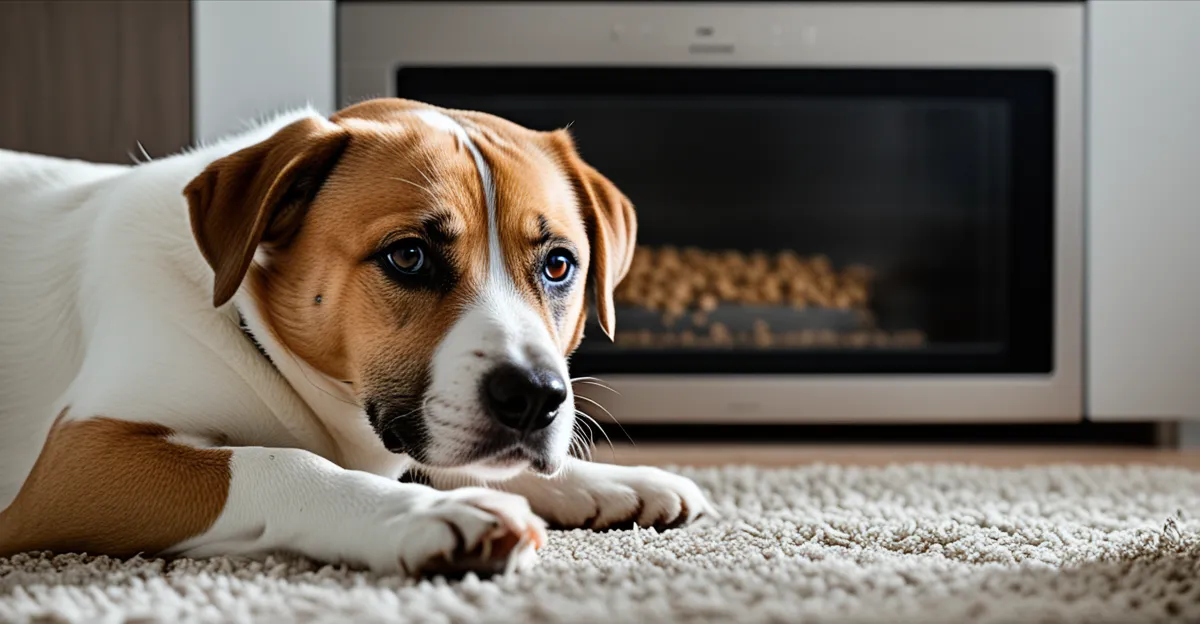Essential Steps for Creating a Safe and Comfortable Home for Pets
Creating a pet-proofing plan begins with identifying potential hazards. Practical measures include securing electrical cords, storing cleaning agents out of reach, and removing small objects pets could swallow. These steps are crucial for improving pet safety across all species.
Ensuring a pet environment supports comfort means tailoring spaces to your pet’s size, breed, and behavior. For example, placing soft bedding in quiet corners helps pets feel secure and relaxed. Modifying temperature controls and lighting also enhances pet comfort, reducing stress and promoting well-being.
Also to read : How Can UK Pet Owners Keep Their Pets Safe and Happy During the Seasons?
It is important to consider every area of the home. Hard floors may cause joint strain for some pets; therefore, adding rugs or mats can prevent discomfort. Likewise, keeping food and water stations clean and accessible encourages healthy eating habits and hydration.
This holistic approach to pet safety and comfort prevents accidents and supports emotional needs. By combining thoughtful pet-proofing measures with environmental modifications, you create a safer, more inviting home that pets can thrive in. Emphasizing care in both safety and comfort transforms your home into a haven for your animal companions.
In parallel : How Can UK Pet Owners Enhance Their Pets’ Health and Wellbeing?
Pet-Proofing Different Areas of Your Home
Pet-proofing a home effectively means addressing each room’s unique challenges with a room-by-room guide. The living room often contains electrical cords, breakables, and small objects. Secure cords using covers or clips to enhance home safety for pets and reduce chew risks. Remove fragile items within paw’s reach to prevent accidents.
In the kitchen, common hazards include sharp utensils, cleaning agents, and accessible food. Store knives and toxic cleaners in high cabinets or locked drawers. Avoid leaving food scraps on counters or floors to stop pets ingesting harmful substances. Using child safety latches can assist but remember pet-proofing differs from child-proofing because pets use different methods, like chewing or jumping, to reach hazards.
Bathrooms contain medications and toiletries that pose risks. Always keep these items in closed cabinets. Wet floors can cause slipping, so maintain dry, non-slip mats for both pet safety and comfort.
Understanding these hazards is crucial. Tailoring your pet-proof home strategies prevents injuries and creates a safer, more comfortable environment. Focusing on each area’s specific dangers establishes a comprehensive plan, ensuring your pet’s wellbeing in all parts of your house.
Choosing Safe Materials and Non-Toxic Plants
Creating a pet environment that prioritizes pet safety means carefully selecting pet-safe materials and houseplants. Flooring is a key consideration; options such as vinyl, tile, and sealed hardwood are durable, easy to clean, and non-toxic—ideal for reducing risks if pets scratch or lick surfaces.
When choosing furniture, avoid materials treated with harmful chemicals or those shedding toxic fibers. Natural wood and tightly woven fabrics minimize exposure to irritants and support pet comfort by providing sturdy, safe resting spots. For upholstery, pet-friendly fabrics like microfiber resist hair accumulation and are easier to maintain.
Regarding greenery, many common houseplants can be toxic if ingested. Choosing non-toxic plants such as spider plants, Boston ferns, and African violets ensures your indoor garden is safe for pets. Outdoor pet areas should also avoid plants like azaleas or lilies, which pose poisoning risks.
To keep your home truly pet-proof, regularly inspect your space for potentially harmful substances. This includes fertilisers, pesticides, and even some decorative items. Removing or replacing these contaminants enhances your home’s overall pet safety and contributes positively to your pet’s health and wellbeing.
Recommended Pet Furniture and Enrichment Options
Creating a comfortable and stimulating pet environment relies heavily on selecting the right pet furniture and enrichment tools. Essential furniture pieces, such as supportive beds, scratching posts for cats, and sturdy hideaways for small animals, enhance pet comfort while addressing natural behaviours. For example, a raised bed can reduce joint pain in older dogs and provide a cozy retreat.
Enrichment is crucial in preventing boredom and encouraging mental and physical activity. Interactive pet toys like puzzle feeders engage dogs and cats, promoting problem-solving skills. Small animals benefit from exercise wheels, tunnels, and chewable toys that mimic natural foraging. Combining various enrichment products tailored to specific species supports overall pet safety by reducing destructive habits that arise from frustration.
DIY furniture and enrichment options can be practical and budget-friendly. Repurposing cardboard boxes or creating simple climbing structures offers cost-effective ways to enrich your pet’s life. Prioritizing sturdy, non-toxic materials ensures all furniture and toys contribute positively to pet safety.
Regularly assessing and rotating enrichment items maintains novelty, preventing stagnation. Thoughtful selection of pet furniture paired with engaging toys fosters a balanced, secure, and joyful living space, optimising both pet comfort and well-being.
Cleaning Routines for a Pet-Friendly Home
Maintaining a consistent pet cleaning routine is vital for overall pet hygiene and the wellbeing of both pets and humans in the home. Daily tasks include vacuuming or sweeping to reduce pet hair and dander, which helps control allergens. Wiping down feeding areas and water bowls prevents bacterial buildup, supporting pet safety by reducing illness risks.
Weekly deep cleaning is equally important. Washing pet bedding in hot water removes dirt, odors, and parasites, enhancing pet comfort and promoting a fresh pet environment. Use pet-safe cleaning products to avoid exposing animals to harsh chemicals, which can irritate skin or respiratory systems.
Effective tools include HEPA-filter vacuums, microfiber cloths, and enzymatic cleaners designed for pet messes. These contribute to thorough allergen control and stain removal without harming pets.
Managing allergens benefits both sensitive pet owners and visiting guests. Regular grooming complements cleaning by decreasing loose fur and dander. Together, these practices provide a healthier living space and positively impact your pet’s health and happiness.
Adopting a tailored pet cleaning routine focused on hygiene and allergen reduction creates a more comfortable, safe, and inviting home for every member of your household.
Essential Steps for Creating a Safe and Comfortable Home for Pets
Creating a truly safe pet environment demands precise pet-proofing that targets everyday risks. Start by securing all electrical cords with covers or clips to prevent chewing hazards. Store cleaning supplies and medications well out of sight to eliminate poisoning dangers. Small objects should be removed from floors and surfaces, as pets often swallow items that can cause choking or blockages.
Pet safety applies equally to dogs, cats, birds, and small mammals. Each needs tailored protection—bird cages away from drafts, no accessible toxin-laden plants for cats, and chew-proof barriers for rodents. Recognizing these species-specific risks ensures comprehensive home safety.
Beyond preventing injury, enhancing pet comfort is key. Provide soft bedding in quiet areas to comfort anxious pets. Adjust room temperature and lighting for sensitivities—older pets or certain breeds appreciate warmer spaces without glare. Use rugs on slippery floors to reduce joint strain and prevent falls.
Together, practical pet-proofing with tailored comfort improvements build a secure, welcoming home that supports physical health and emotional wellbeing. Prioritizing both safety and comfort creates a pet-friendly oasis where all your companions can thrive confidently.
Essential Steps for Creating a Safe and Comfortable Home for Pets
Pet-proofing begins with practical measures that protect every inch of your pet environment. Secure electrical cords using covers or clips to prevent chewing injuries. Store cleaning products and medications out of reach to avoid accidental poisoning. Remove small objects routinely, as pets can choke or block their digestive tracts by swallowing items left on floors or low tables.
Why emphasize pet safety for all types of animals? Different pets face unique risks. Dogs risk ingesting toxic foods, cats may chew harmful plants, and small mammals need chew-proof barriers to prevent escape or injury. Recognizing specific hazards is vital for a comprehensive safety plan.
Ensuring pet comfort means adjusting your home layout and materials accordingly. Soft bedding in quiet nooks soothes nervous pets. Non-slip rugs on hard floors cushion joints and prevent slips, especially for elderly or arthritic animals. Regulating room temperature and lighting aids sensitive pets, reducing stress and improving rest.
Ultimately, combining tailored pet-proofing tactics with thoughtful comfort enhancements fosters a home where every pet can thrive. This dual focus on pet safety and pet comfort creates a nurturing sanctuary that supports health and happiness.

